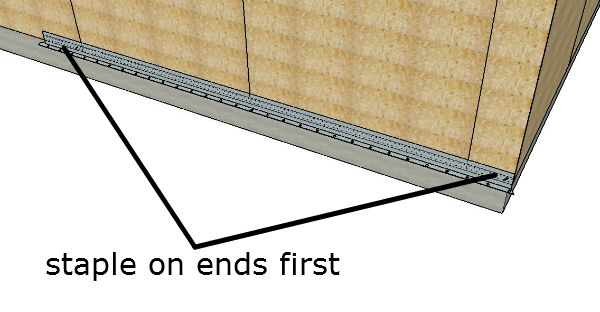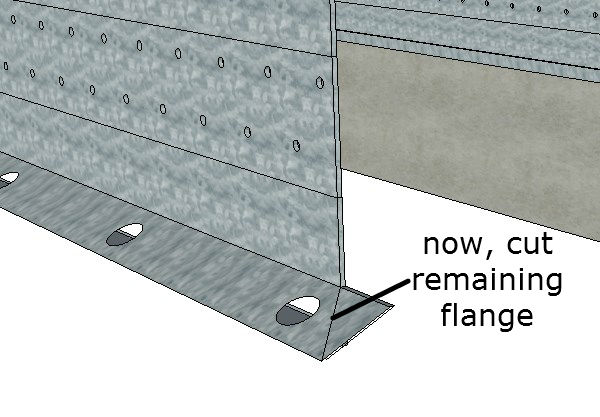
Weep screed allows the water that gets behind the finish and base coats of stucco to drain out through holes, this is a major component in how stucco functions. Installing it is very simple and requires basic tools and knowledge. Here is a few pointers to get you started in the right direction.
Tools Needed:
- Metal cutting shears (M3’s recommended)
- Speed square
- Marking tool (sharpie, razor knife, etc.)
- Staple gun (wide crown 1 1/4″ minimum length) or hammer and nails
Cutting Corners:
In order to join two pieces of weep at the corner of a wall, you will want to cut 45 degree angles at an outside or inside angle, depending on which type of corner you are up against. There are a couple of ways to cut corners but I want to keep it simple and minimize confusion, so I chose to go this route.
The process is the same for both inside and outside corners, the angles that you end up cutting are just mirrored. You would cut an outside corner with a normal 45 degree angle and an inside one with a 45 degree angle going the opposite way.
Cutting Inside Corners:
Step 1:
Measure 7/8″ along the front lip and make a mark, then draw a line at a 45 degree angle from your mark to the back edge of the weep screed and up the lip. This will be your cut line.
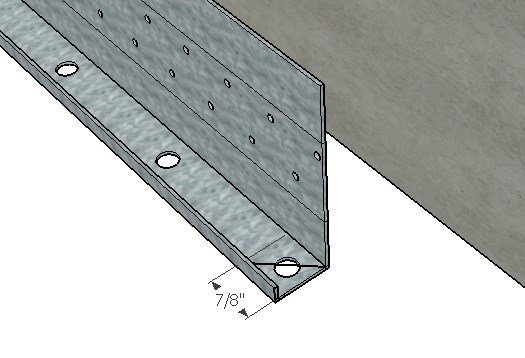
Step 2:
Now cut the flange along the front straight down and follow your line, cutting off the bottom portion of the weep until you have something left like this:
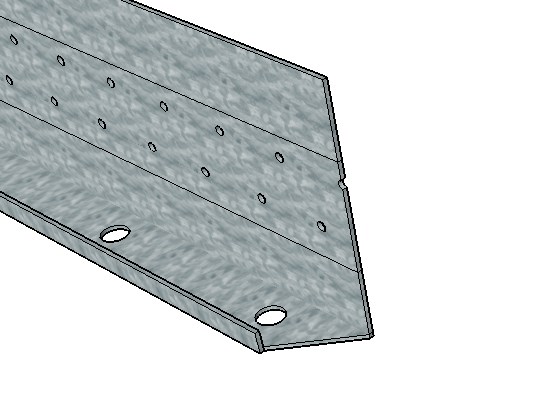
Step 3:
Do this same process on an opposite end of weep screed, so you have two 45 degree angles that align perfectly like the picture illustrates on the right.
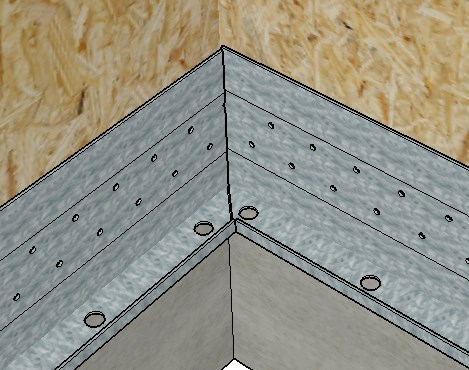
Other Type Of Weep Screed:
The other type of weep screed that is used looks a little different but is cut at the same measurements, the only difference is the method to cutting it. Here is an example of what I am talking about...
Step 1:
Start off the same way we did the “J” type and take a measurement at 7/8″. make a mark and draw lines at a 45 degree angle like the picture illustrates.
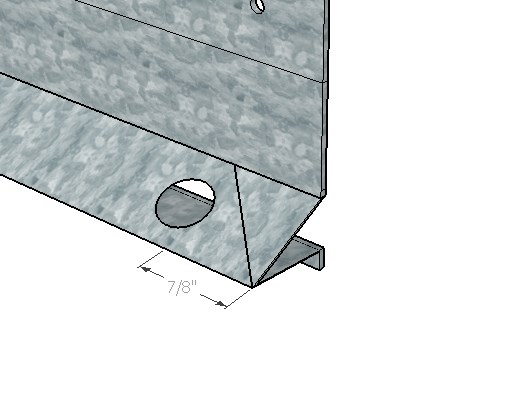
Step 2:
Cut the two lines you made but it will be hard to cut the “V” section so work your way towards it, cutting the bottom first, turn the piece, cut the top and bend the remaining piece up and down until it cuts through.
The bottom picture shows what the finished product should look like.
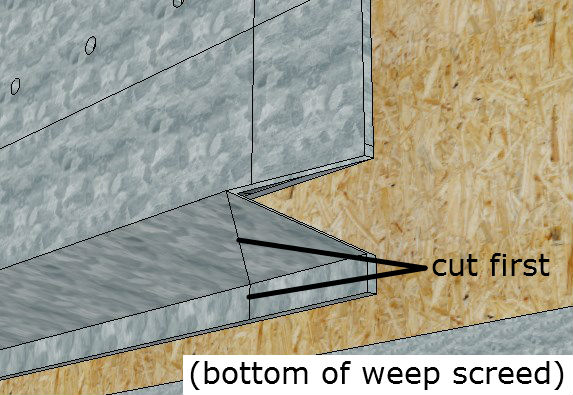
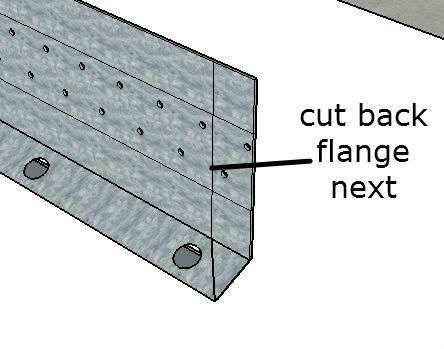

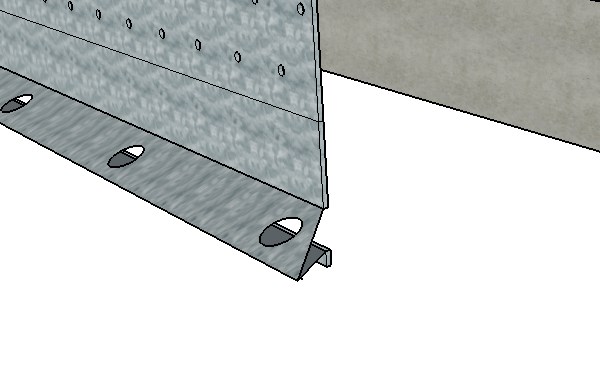
Finished Example (Outside Corner)
Outside Corners:
Step 1:
Make a mark just like we did for the inside corner at 7/8″ but along the back flange this time. We are creating that 45 degree angle the opposite way for our outside corner.
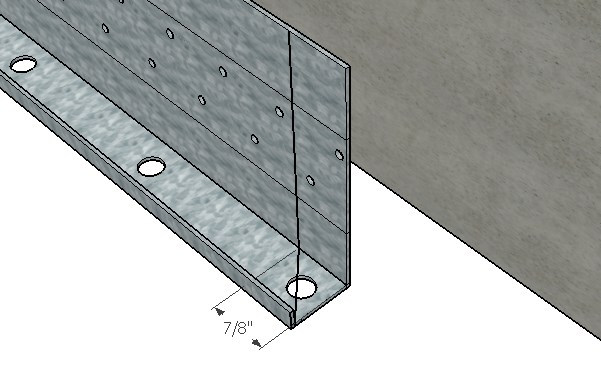
Step 2:
Cut along your line on the bottom edge of the weep screed and follow it up to the flange on the back, cutting it off as well. You can also cut the back flange from the top down, if it is easier for you to do so.
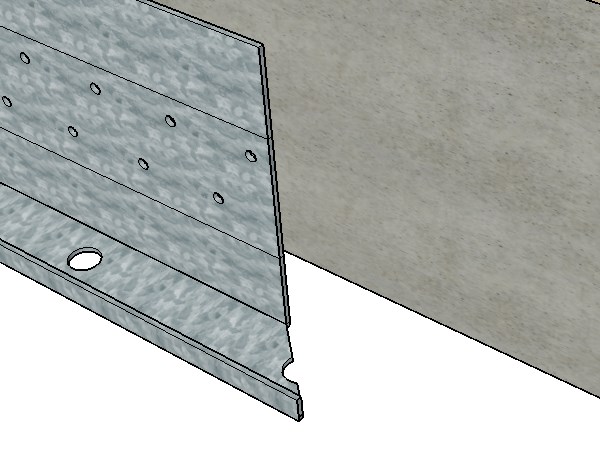
Step 3:
Do the same to an opposite end of weep screed and you will have two angles that meet up nicely. Notice how the back flange is cut right at the corner of the sheathing and the lower portion of the weep screed extends past it.

90 Degree Angles (Horizontal and Vertical):
There are some cases where you want to bend a piece of weep or plaster stop at a 90 degree angle, like for staircases, doors, electrical boxes, etc. You can actually eliminate multiple pieces and bend the piece instead.
Step 1:
Make a mark where you want your bend to be and trace a line using a speed square along the back flange and another on the shorter front flange. A marker or utility knife will work well to mark the metal and a pencil will show up too but be very light.
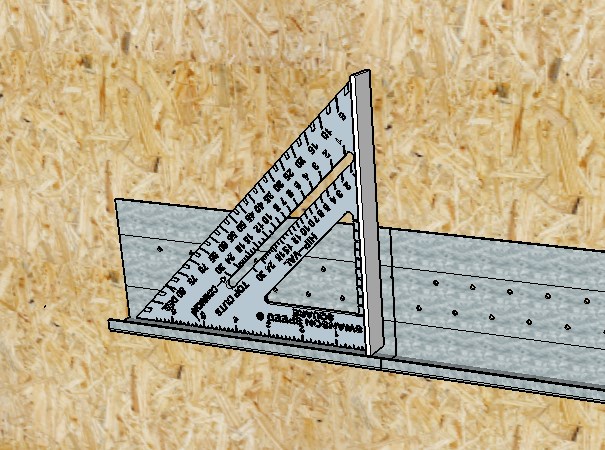
Step 2:
Now cut the back and front flanges that we marked. This will allow the piece of metal to bend up or down, giving you an inside or outside corner.
The straighter your cut the better the end result will be.
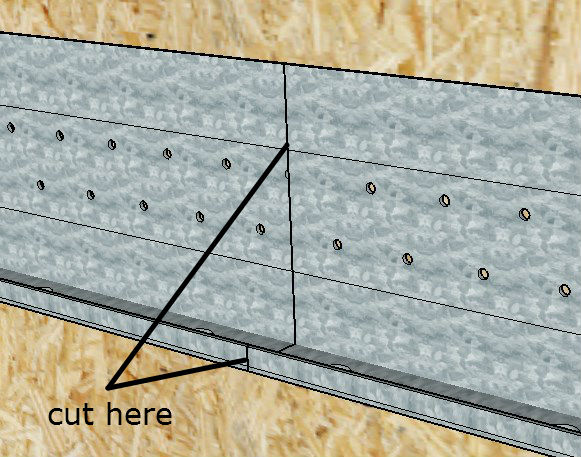
Step 3:
Bend the metal up or down to create a crease along the bottom edge of the weep screed where the weep holes are located. Take a look at the difference between an inside and outside corner.
In this example, I kept the bottom piece uncut and bent it instead of cutting it off. You could also cut the bottom piece off and join the two pieces of weep screed and achieve the same results.
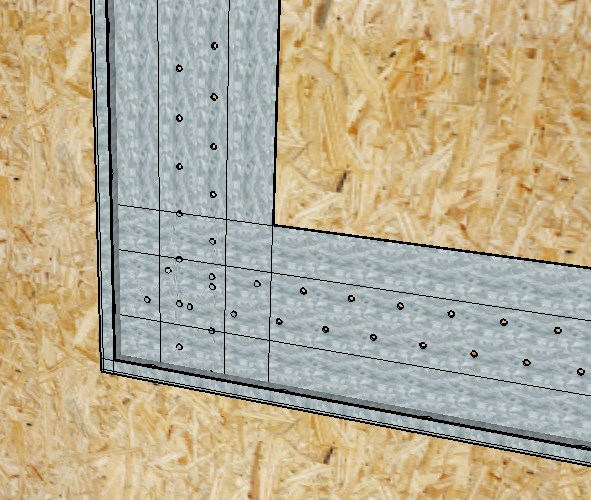
Metal Bent Up
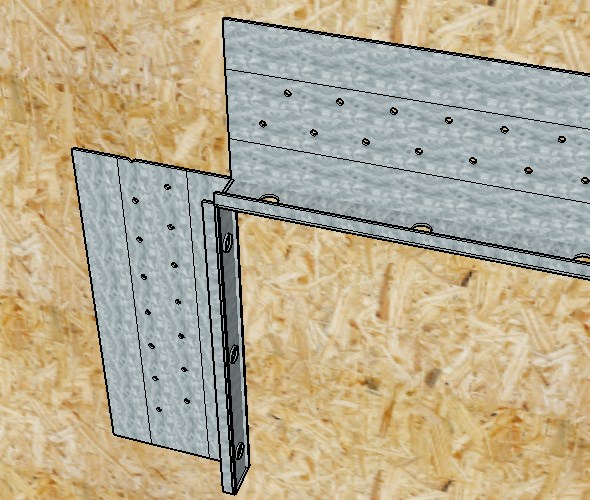
Metal Bent Down
Where Two Pieces Of Weep Meet Up:
Running continuous lengths of weep screed will require you to join them together with an overlap of approximately 1″. This is only for the "J" shaped piece of weep screed, the other type of weep will slide together, on top of one another nicely.
Step 1:
All you need to do to join two pieces of weep screed is to cut a “V” notch out of the bottom piece, so the two pieces can slide together.
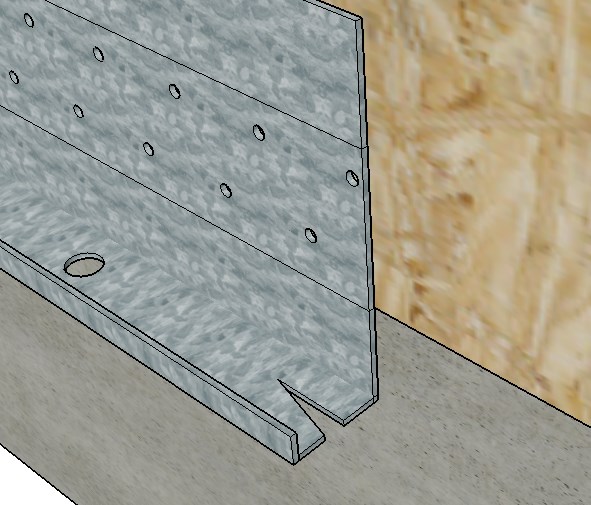
Step 2:
Bend the outer flange down a little bit so you can slide it under the existing piece of weep. The back flange of the new piece will go over the existing piece.
Slide until the new piece of weep screed is overlapping 1″. You can always take a little more out of the notch to get a better overlap if you want to. A MINIMUM of 1″ is recommended but more is fine, just no less.
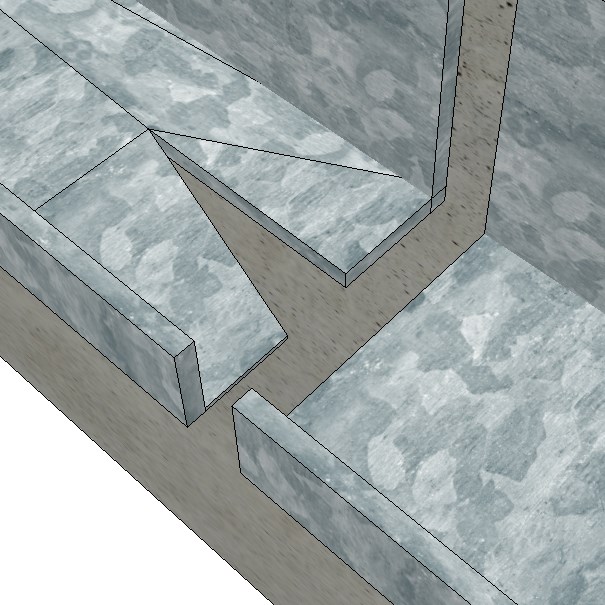
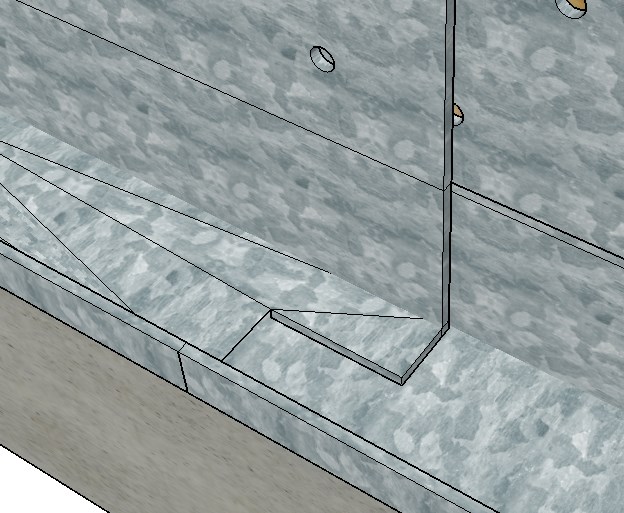
Installation Process:
The installation process is fairly simple and goes pretty quick. Start at an outside corner and work your way around the building.
Step 1:
Typically, you would start at an outside corner (like I mentioned) and work your way around the building.
So start off by cutting an outside corner like I described earlier and make sure the bottom of the weep is roughly 1″ below the sheathing.
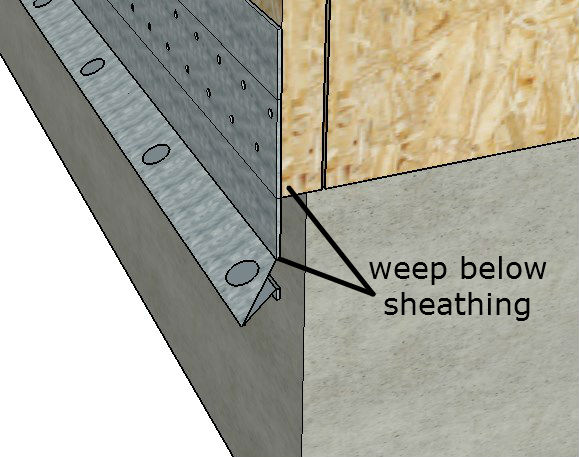
It will be beneficial to have a helper hold one end for you because they come in 10′ lengths and are difficult to manage with one person.
Step 2:
Now use a nail or staple gun to hold it in place. Be sure that the entire piece of weep is roughly 1″ below the sheathing before you nail. Try to keep the fastener in the middle or top of the weep screed for the best results and avoid nailing or stapling along the bottom.
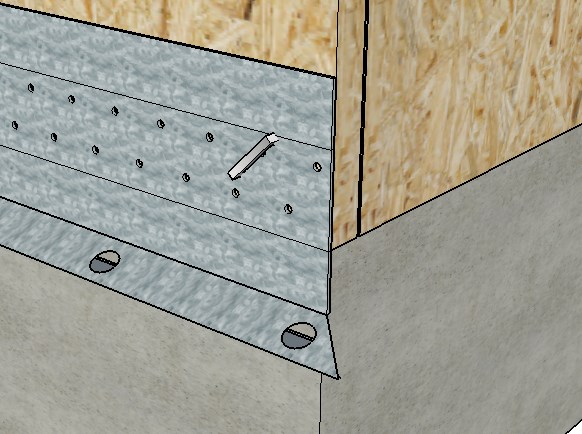
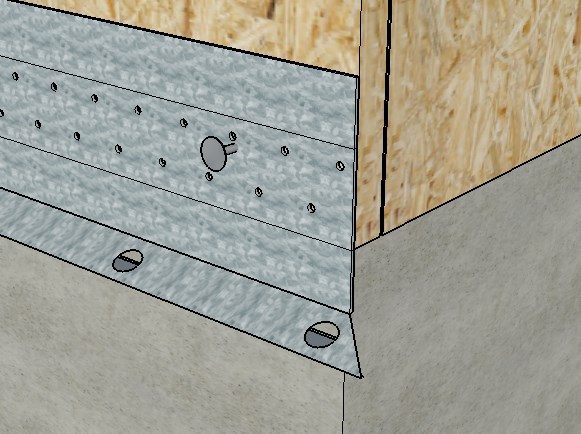
Step 3:
Nail off the other end, making sure you still have that 1″ gap at the bottom between the sheathing and bottom edge of the weep screed and use a pattern like the image to the right shows. After the ends are secure, staple off the weep screed, putting a staple or nail every 16" - 24" or so.
